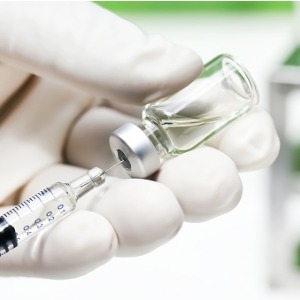Vitamin D and Sun Exposure To Your Skin
The Sun Is Your Best Source of Vitamin D
The term “sunshine vitamin” applies to vitamin D for good reason. When exposed to sunshine, your skin produces vitamin D from cholesterol. The energy for vitamin D synthesis is provided by the sun’s ultraviolet B (UVB) radiation striking cholesterol in skin cells.

The body uses vitamin D for a variety of purposes and it is crucial for good health. For instance, it tells the cells in your gut to assimilate calcium and phosphorus, two minerals necessary for the upkeep of sturdy and healthy bones.
On the other side, inadequate vitamin D levels have been associated with harmful health effects, such as:
- Osteoporosis
- Cancer
- Depression
- muscle tremor
The Important Stuff:
Vitamin D is produced by your body when your skin is exposed to sunshine. D3, also known as cholecalciferol, is the type of vitamin D that you obtain from sunlight and is made of cholesterol. The quantity of vitamin D your bare skin produces when exposed to sunlight depends on a number of variables. As follows:
1) Where you live
Your body can produce vitamin D from the sun’s rays all year round the easier you live the closer you are to the equator. For instance, because Florida receives more UVB light exposure, which is required to manufacture vitamin D, if you reside at a northern latitude like Anchorage, Alaska, your body will produce less vitamin D during the winter than if you live in Miami.
2) The amount of skin you expose
You may be at risk for vitamin D insufficiency if you frequently cover the majority of your skin with garments. Also, if they don’t take enough vitamin D, people who workout inside during the winter may have to draw from their body’s reserves, further raising their risk for deficiency. Because less UVB rays are able to reach your skin during cloudy days, the weather can also be problematic.
3) The color of your skin
A darker complexion may make it more difficult to synthesize vitamin D from sunlight. Your body’s capacity to produce vitamin D in reaction to sunlight exposure is lowered by the pigment melanin, which is more prevalent in those with darker skin. In essence, this means that those with lighter skin types create vitamin D more quickly than those with darker skin tones. Typically, skin-color typology is divided into the following groups:
- Type I – White; very fair; red or blond hair; blue eyes; freckles
- Type II – White; fair; red or blond hair; blue, hazel, or green eyes
- Type III – Cream white; fair; with any eye or hair color; very common
- Type IV – Brown; typical Mediterranean Caucasian skin
- Type V – Dark Brown; mid-eastern skin types
- Type VI – Black
In terms of producing vitamin D, those with skin types I to III create it more quickly than people with skin types IV to VI. As a general guideline, you should get half the amount of sun exposure necessary for your skin to turn pink in order to consume the recommended quantity of vitamin D. Once you have had enough time to expose your skin, cover up with clothing and return to the shade. To create the same amount of vitamin D, a person with darker skin may require up to 10 times more sun exposure than someone with lighter skin.
4) The time of year and day
UVB rays are blocked when the sun’s rays strike the Earth’s atmosphere at a sharp angle. In the winter, this happens most of the day, as well as in the morning and evening. Hence, to allow for optimal production, expose your skin to the sun closer to midday if you want to enhance your vitamin D levels. Yet, you might not be able to meet your demands if you only rely on sunlight in the winter.
5) Season
Vitamin D levels in Americans fluctuate throughout the year, reaching a peak in August and a trough around February. Winter is generally when vitamin D levels are at their lowest, according to research. Because more UVB radiation reaches locations distant from the equator in the summer, when the Earth rotates, the angle of sunlight reaching the atmosphere is optimal for vitamin D formation.
6) Duration for maximum levels of vitamin D
Our daily exposure to sunlight should provide more than 90% of the vitamin D we need. According to the National Institutes of Health, two to three times per week, between five and thirty minutes of unprotected sun exposure to your face, arms, legs, or back between the hours of 10 a.m. and 3pm is sufficient for your body to produce all of the D3 it requires.
7) Sunscreen blocks vitamin D
Vitamin D synthesis can be inhibited by sunscreen. Sunscreen must not be worn if you want your skin to absorb UVB rays, which are required to produce vitamin D3. In fact, studies have shown that sunscreens with an SPF of 8 or higher completely prevent our skin from absorbing sunlight-derived vitamin D.
8) Skin cancer
Due to the risk of skin cancer, it’s crucial to limit your sun exposure. You might want to consult a doctor to determine whether taking a supplement is the best option for you given the risks associated with excessive sun exposure. There are two types of vitamin D available as supplements: D2 and D3. The two forms of vitamin D have historically been treated equally since the majority of processes that take place during the metabolism of vitamin D2 and D3 are substantially identical. High amounts of vitamin D2 are less effective, even when nutritional levels of D2 and D3 are comparable. The Vitamin D Council advises taking vitamin D3 instead of vitamin D2 for this reason.
















Leave a Reply
Want to join the discussion?Feel free to contribute!